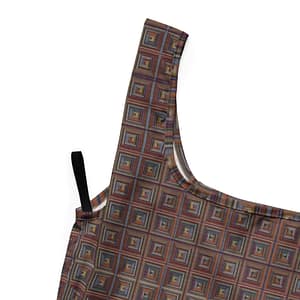Paul Klee (German: [paʊ̯l ˈkleː]; 18 December 1879 – 29 June 1940) was a Swiss-born German artist. His highly individual style was influenced by movements in art that included expressionism, cubism, and surrealism. Klee was a natural draftsman who experimented with and eventually deeply explored color theory, writing about it extensively; his lectures Writings on Form and Design Theory (Schriften zur Form und Gestaltungslehre), published in English as the Paul Klee Notebooks, are held to be as important for modern art as Leonardo da Vinci‘s A Treatise on Painting was for the Renaissance.[1][2][3] He and his colleague, Russian painter Wassily Kandinsky, both taught at the Bauhaus school of art, design and architecture in Germany. His works reflect his dry humor and his sometimes childlike perspective, his personal moods and beliefs, and his musicality.
Klee was at the peak of his creative output. His Ad Parnassum (1932) is considered his masterpiece and the best example of his pointillist style; it is also one of his largest, most finely worked paintings.[53][54] He produced nearly 500 works in 1933 during his last year in Germany.[55] However, in 1933, Klee began experiencing the symptoms of what was diagnosed as scleroderma after his death. The progression of his fatal disease, which made swallowing very difficult, can be followed through the art he created in his last years. His output in 1936 was only 25 pictures. In the later 1930s, his health recovered somewhat and he was encouraged by a visit from Kandinsky and Picasso.[56] Klee’s simpler and larger designs enabled him to keep up his output in his final years, and in 1939 he created over 1,200 works, a career high for one year.[57] He used heavier lines and mainly geometric forms with fewer but larger blocks of color. His varied color palettes, some with bright colors and others somber, perhaps reflected his alternating moods of optimism and pessimism.[58] Back in Germany in 1937, seventeen of Klee’s pictures were included in an exhibition of “Degenerate art” and 102 of his works in public collections were seized by the Nazis.[59]









Klee has been variously associated with Expressionism, Cubism, Futurism, Surrealism, and Abstraction, but his pictures are difficult to classify. He generally worked in isolation from his peers, and interpreted new art trends in his own way. He was inventive in his methods and technique. Klee worked in many different media—oil paint, watercolor, ink, pastel, etching, and others. He often combined them into one work. He used canvas, burlap, muslin, linen, gauze, cardboard, metal foils, fabric, wallpaper, and newsprint.[65] Klee employed spray paint, knife application, stamping, glazing, and impasto, and mixed media such as oil with watercolor, watercolor with pen and India ink, and oil with tempera.[66]
Source: Wikipedia
-
Senecio Klee Shopping Bag$24.00
-
Paul Klee: Ancient Sound, Abstract on Black (1925) Duffel Bag$69.00
-
Paul Klee: Rhythms Waterproof Travel Bag$110.00
-
Paul Klee Area RugPrice range: $37.00 through $110.00
-
Paul Klee: “The Firmanent Above the Temple” Microfiber Pillow ShamPrice range: $32.00 through $35.00
-
Klee’s Color Chart Luggage CoverPrice range: $30.00 through $40.00
-
Paul Klee Duet Tufted Floor Pillow, SquarePrice range: $51.00 through $75.00
-
Paul Klee: “Old City” (1928) Fleece Sherpa BlanketPrice range: $50.00 through $65.00
-
Paul Klee: Color Chart Shoulder Handbag$49.00
-
Paul Klee Color Chart Glass Cutting BoardPrice range: $22.00 through $30.00
-
Paul Klee: “Late Evening Looking Out of the Woods ” Tripod Lamp$60.00
-
Paul Klee: “Qu1” Tripod Lamp$60.00












